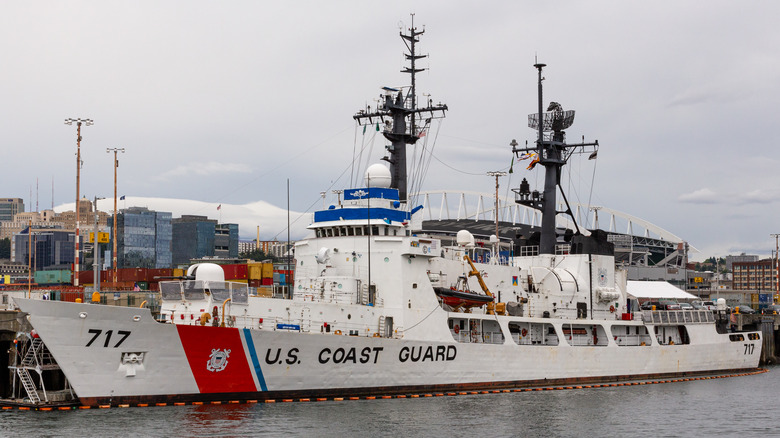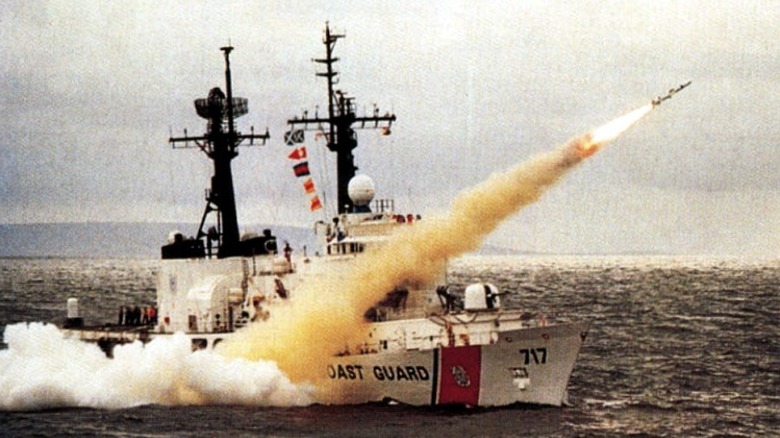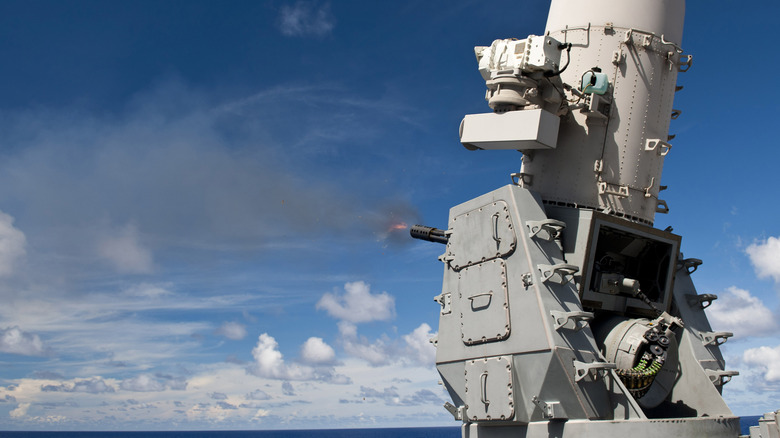Why Some Coast Guard Ships Had Missiles In The Cold War
Open warfare is always harrowing, but the Cold War was horrifically tense in a different kind of way. An attack may have been imminent, or it may never have come at all. For either side in a cold war, it's critical to balance increasing defenses, where needed, with not taking that step too far, seeming to offer a threat that would have to be responded to. This unique level of tension led to a range of experimental offensive and defensive efforts, one of the most intriguing being equipping some U.S. Coast Guard vessels with missiles.
The two global superpowers were in something of a stalemate, and for the vessels of the U.S. Coast Guard, it was no time to be caught defenseless by a surprise Soviet attack. This isn't to say that the vessels were unprotected as it was, but that protection against violence in the course of daily duties and self-defense in warfare are very different concepts. This is how some of the vessels that formed the Hamilton class of cutters came to be outfitted with RGM-84 Harpoon missiles.
When Coast Guard ships were equipped with missiles
Submarines are among the most potent threats in the ocean, and there were some formidable Cold War-era submarines, so it was considered important to be able to counter them. The potent Harpoon missiles from McDonnell Douglas gave U.S. ships the ability to strike a long-range blow against other naval targets. They were first conceived in the mid-1960s, to be used against submarines above the waterline, where they are generally more vulnerable, and first deployed in 1977. Variations would allow for deployment on aircraft and use against targets on land.
It was Adm. Paul A. Yost Jr. who gave some of the Coast Guard's high-endurance cutters the means to use Harpoon missiles. Yost was the service's commandant from 1986 until 1990, which means that these vessels had the means to use them until the end of the Cold War, which lasted until the fall of the Soviet Union in 1991. But though the cutters had access to the missiles, they wouldn't see use in combat. In fact, the U.S. Naval Institute reports, USCGC Mellon fired one in 1990, the only Coast Guard cutter ever to do so. After the USSR collapsed, the missiles were removed.
The weaponry of Coast Guard ships
It's the Navy, rather than the Coast Guard, that employs America's most heavily armed ships. The Coast Guard doesn't generally need something like world's largest aircraft carrier. Nonetheless, it's a branch of the U.S. armed forces, and does sport some formidable vessels, as well as Coast Guard aircraft.
National security cutters, of the Legend class, are appropriately named: 124.7 meters long and displacing 4,960 tons, they offer a total of 49,875 shaft horsepower, powered by two mighty MTU 20V1163 engines and a turbine. They're also well armed: Legend-class cutters are equipped with a 57 mm MK110 gun and a 20 mm close-in weapons system. The computer-controlled Phalanx CIWS (such as the one pictured above) is a versatile, valuable defensive weapon.
These cutters aren't to be trifled with, and they're well-suited to being equipped with longer-range firepower when needed. This is a tool the U.S. has long kept in reserve. The War Zone reports that Adm. Paul Zukunft, Coast Guard commandant, told the House Homeland Security Committee in 2017, "We need to look differently at what an icebreaker does... We need to reserve space, weight and power if we need to strap a cruise missile package on it."
The volatile nature of a Coast Guard vessel's operations mean that even the smallest of them are armed, or could be. Strapping on cruise missiles isn't always practical, but some of the Coast Guard's biggest ships can do it should it be deemed necessary.


